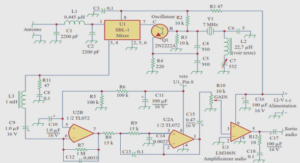The kinematic models and the dynamic models of the fingers
Symbols and units
The units used through the thesis comply with the international units and are reported in table 2.1. 2.2 Kinematic modeling approaches Robotic manipulators represent a subclass of mechanisms that have a specific mechanical structure. Most often, they consist of a serial connection of links connected by revolute or prismatic joints. Although other types of joint exist, the use of electromotors for the actuation and ball bearings for the guidings leads to those two principal types. The transformation of the robot end-effector is obtained by cumulating the transformation of each link in the chain, starting from the base. Homogeneous transformation matrices are used to establish kinematic models. It circumvents the ambiguity of the Denavit-Hartenberg [99] notation while having negligible impact on the real-time system. Indeed, the implementation is performed through the use of formal manipulation softwares (MapleTM) and C language export. 2.3 Dynamic modeling approaches Dynamic modeling approaches are used to established the dynamic equations of motion in the form M(q)q¨ + C(q, q˙)q˙ + g(q) = τ , (2.1) where n ∈ N is the number of links, M(q) ∈ R n×n , C(q, q˙) ∈ R n×n , g(q) ∈ R n are respectively the inertia matrix, the Coriolis and centrifugal effects and the gravity torque covector. q ∈ R n and τ ∈ R n are the joint position and the motor torque vector. A dynamic model of the system is paramount for any analysis and controller design. Numerous techniques have been developed to establish the system of second order differential equations, such as Lagrange-Euler, recursive Lagrangian and Newton-Euler methods. Each approach leads to the same behavior [100], but the computation burdens are different. One can refer to [101] for a comparison of the different methods applied on different types of robot.
Newton-Euler approach
The Newton-Euler method is a recursive method based on the equilibrium of forces and torques. In numerous papers and text books, the method is used to establish the dynamic equations. The equations reported here are based on Craig . Several software packages such as Symoro+have been developed based on this algorithm, in order to simplify the modeling process. More recently, in [104] De Luca proposed to modify the genuine method in order to reduce the computational effort to obtain the Coriolis/centrifugal and inertia matrices. The Newton-Euler method proceeds in two phases: first the velocity and acceleration are computed from base to end-effector. Then, the forces and torques are computed from end-effector to base. Base equations A free body of mass m ∈ R + subject to a force F ∈ R acting on the center of mass results in an acceleration a ∈ R according to Newton’s law
Forward equations
The position, velocity and acceleration of all links are propagated from bottom to end-effector. Considering a chain of n ∈ N bodies connected with n revolute joints. Starting from the base link < 0 > attached to frame {0} (cf. Fig. 2.1) up to the end effector link < n > attached to frame {n}. The velocities and accelerations of the link are obtained from the previous link wit where ∀i ∈ [0 . . . n − 1], ivi ∈ R 3 is the linear velocity of link i with respect to the frame {0} expressed in {i}. iωi ∈ R 3 is the the angular velocity of link i with respect to {0} expressed in {i}, ipi+1,i ∈ R 3 is the vector between the rotation center of body < i > and body < i + 1 > rotation points, expressed in {i}. Similarily, iai ∈ R 3 is the linear acceleration of link i with respect to {0} expressed in {i} and iω˙ i ∈ R 3 is the angular acceleration of the link i expressed in {i}.
Lagrange approach
The Lagrange method is based upon the fact that the change of energy of the system is equal to the power exchange with the environment. More formally, by introducing L = Ev−Ec the difference between the kinetic energy Ev and the potential energy Ec(elastic or gravity), and in the absence of frictional losses (also called the Rayleigh dissipation terms), the joint torques τi are directly obtained as: d dt ∂L ∂q˙i − ∂L ∂qi = τi , ∀i ∈ [1 . . . n] (2.16) for a system with n degrees of freedom, where q is the state variable and L is the Lagragian of the system. Collecting the terms allows to write the dynamic equation as M(q)q¨ + C(q, q˙)q˙ + g(q) = τ ext, (2.17) where q ∈ R n is the state vector, M(q) ∈ R n×n is the inertia matrix and C(q, q˙) ∈ R n is the matrix of Coriolis and centrifugal terms. g(q) ∈ R n is the covector of the gravity torques and τ ext ∈ R n is the covector of externally applied torques. Deriving the dynamics equations with the Lagragian method mainly consists of expressing the Lagrangian L of the mechanical system and symbolically deriving the expressions for the torques τi , i ∈ [1 . . . n]. The method can be applied to any not non-holonomic mechanism structure. It is a systematic method and can be applied programatically. However, applied without further considerations, the method generates computationally more expensive form






